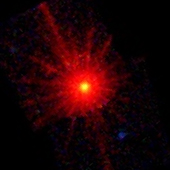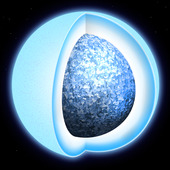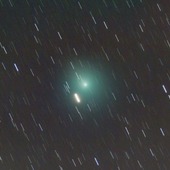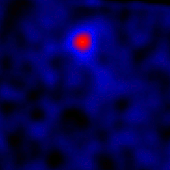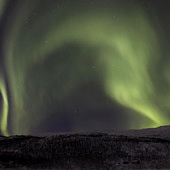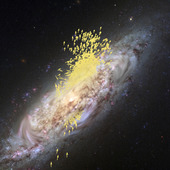ESA Science & Technology - News Archive
News archive
News archive
An interview with ESA's Director of Science, Günther Hasinger, on space science at ESA – his reflections on last year's achievements and his visions for the future of space science.
Published: 5 February 2019
Astronomers using the NASA/ESA Hubble Space Telescope to study some of the oldest and faintest stars in the globular cluster NGC 6752 have made an unexpected finding. They discovered a dwarf galaxy in our cosmic backyard, only 30 million light-years away.
Published: 31 January 2019
Investigating the history of our cosmos with a large sample of distant 'active' galaxies observed by ESA's XMM-Newton, a team of astronomers found there might be more to the early expansion of the Universe than predicted by the standard model of cosmology.
Published: 28 January 2019
ESA's high-energy space telescopes INTEGRAL and XMM-Newton have helped to find a source of powerful X-rays at the centre of an unprecedentedly bright and rapidly evolving stellar explosion that suddenly appeared in the sky earlier this year.
Published: 10 January 2019
The NASA/ESA Hubble Space Telescope has discovered the brightest quasar ever seen in the early Universe. After 20 years of searching, astronomers have identified the ancient quasar with the help of strong gravitational lensing.
Published: 9 January 2019
Astronomers using ESA's XMM-Newton space observatory have studied a black hole devouring a star and discovered an exceptionally bright and stable signal that allowed them to determine the black hole's spin rate.
Published: 9 January 2019
Data captured by ESA's galaxy-mapping spacecraft Gaia has revealed for the first time how white dwarfs, the dead remnants of stars like our Sun, turn into solid spheres as the hot gas inside them cools down.
Published: 9 January 2019
The NASA/ESA Hubble Space Telescope has captured the most detailed image yet of a close neighbour of the Milky Way – the Triangulum Galaxy, a spiral galaxy located at a distance of only three million light-years.
Published: 7 January 2019
Astronomers using data from the NASA/ESA Hubble Space Telescope have employed a revolutionary method to detect dark matter in galaxy clusters. The method allows astronomers to "see" the distribution of dark matter more accurately than any other method used to date and it could possibly be used to explore the ultimate nature of dark matter.
Published: 20 December 2018
ESA's Euclid mission has passed its critical design review, marking the successful completion of a major phase in the progress of the project.
Published: 18 December 2018
A special visitor is crossing the sky: Comet 46P/Wirtanen, sighted with telescopes and binoculars in recent weeks, is on the way to its closest approach to Earth this weekend, when it might become visible to the naked eye.
Published: 14 December 2018
A new study reveals that, contrary to first impressions, Rosetta did detect signs of an infant bow shock at the comet it explored for two years – the first ever seen forming anywhere in the Solar System.
Published: 12 December 2018
The Characterising Exoplanet Satellite, CHEOPS, will target 15 October to 14 November 2019 for launch.
Published: 23 November 2018
Based on a new theoretical model, a team of scientists explored the rich data archive of ESA's XMM-Newton and NASA's Chandra space observatories to find pulsating X-ray emission from three sources.
Published: 21 November 2018
In order to observe billions of faint galaxies and investigate the nature of the dark Universe, ESA's pioneering Euclid mission will require state-of-the-art optics. The first optical element to be delivered, the telescope's primary mirror (M1), has arrived at the premises of Airbus Defence & Space in Toulouse.
Published: 15 November 2018
ESA's Science Programme Committee (SPC) has confirmed the continued operations of ten scientific missions in the Agency's fleet up to 2022.
Published: 14 November 2018
Space weather is no abstract concept – it may happen in space, but its effects on Earth can be significant. To help better forecast these effects, ESA's Cluster mission, a quartet of spacecraft that was launched in 2000, is currently working to understand how our planet is connected to its magnetic environment, and unravelling the complex...
Published: 8 November 2018
ESA's Gaia mission has made a major breakthrough in unravelling the formation history of the Milky Way. Instead of forming alone, our Galaxy merged with another large galaxy early in its life, around 10 billion years ago.
Published: 31 October 2018
The NASA/ESA Hubble Space Telescope has captured part of the wondrous Serpens Nebula, lit up by the star HBC 672. This young star casts a striking shadow – nicknamed the Bat Shadow – on the nebula behind it, revealing telltale signs of its otherwise invisible protoplanetary disc.
Published: 31 October 2018
Since 13 September, ESA's Mars Express has been observing the evolution of an elongated cloud formation hovering in the vicinity of the 20 km-high Arsia Mons volcano, close to the planet's equator.
Published: 25 October 2018
—
20 Items per Page






